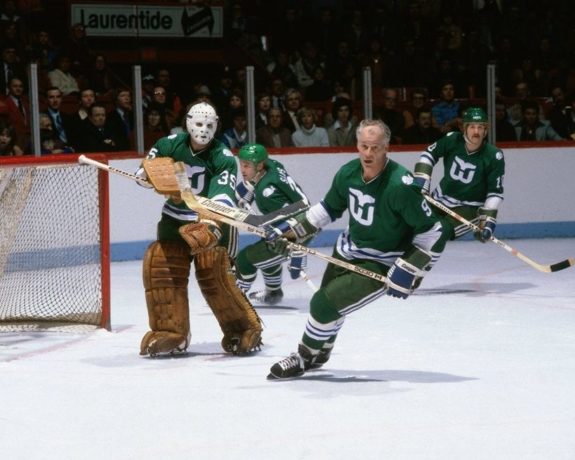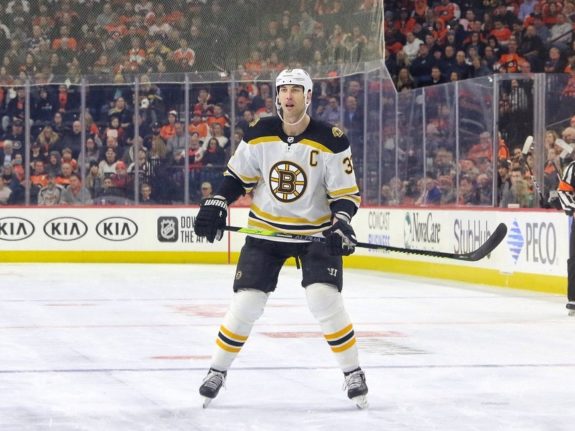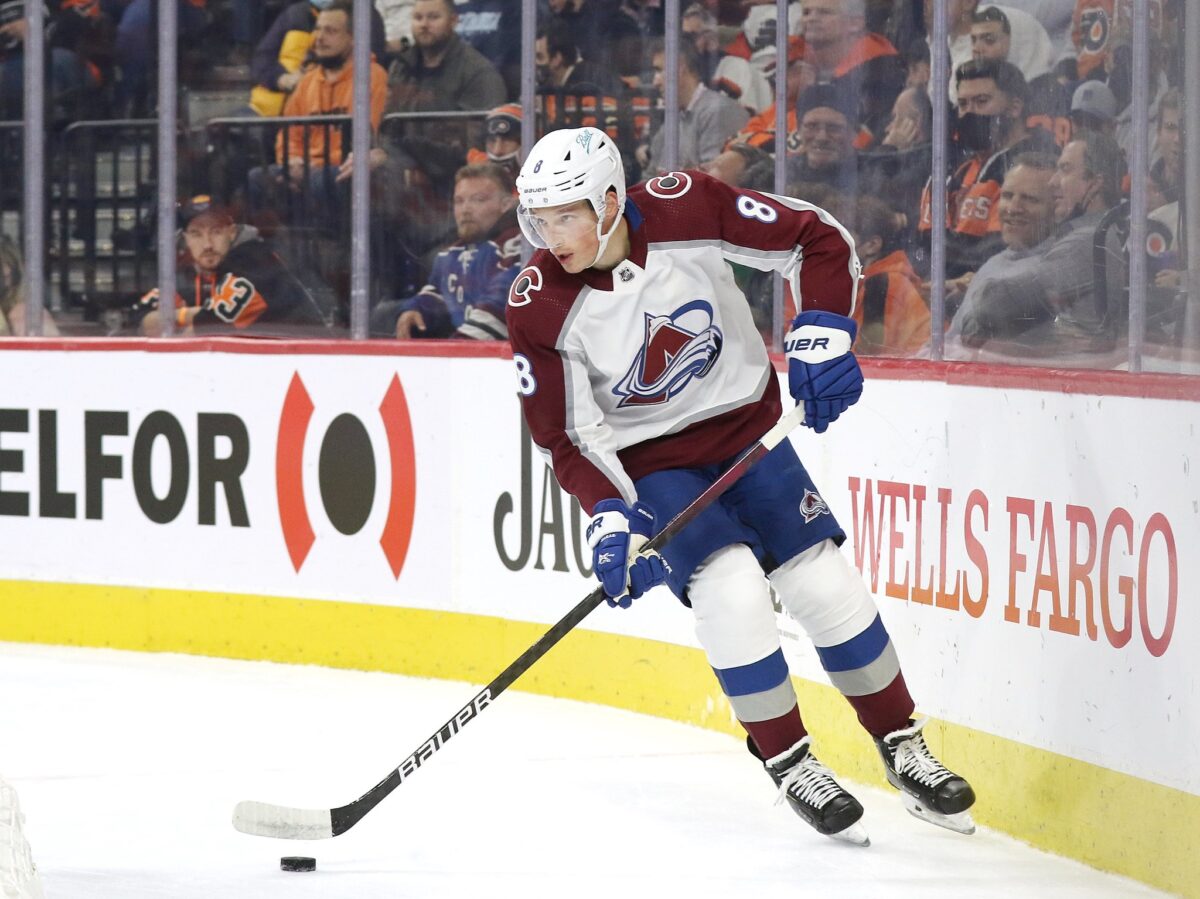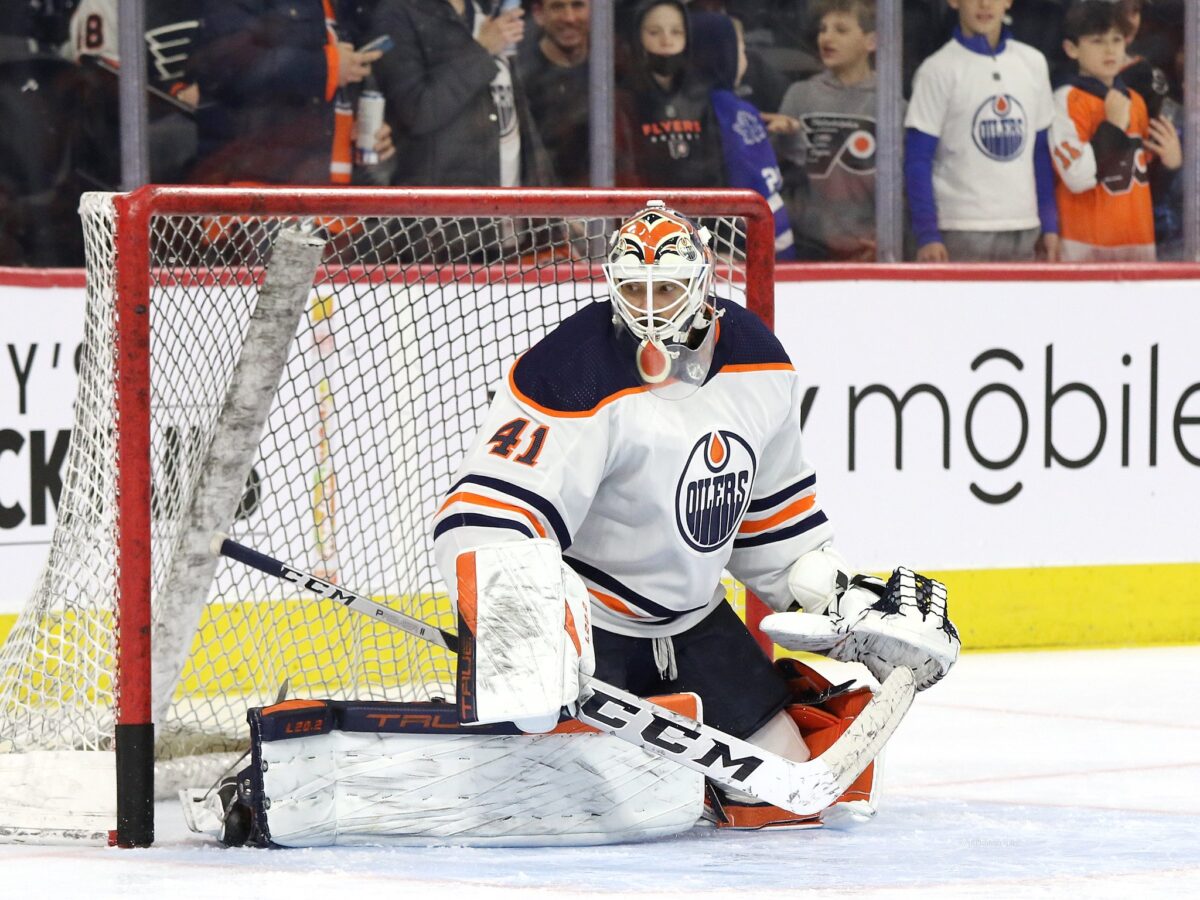The NHL has shifted in recent years and continues to evolve with each passing season. With the league changing and teams valuing versatility along with skill at every level, the players on the ice have looked different, especially at the most important positions. Oftentimes, it’s that some attributes are being devalued but there’s also the development aspect with kids not being drafted and brought into the NHL in the same manner as they used to.
Related: 4 Ways NHL Teams Are Adjusting to High-Speed Offense
With some positions, the rapid change, notably with the game being fast-paced, has made some players rarer in the league. Moreover, some types of skaters and even goaltenders are becoming extinct in today’s NHL and might not return to the game in the future.
Power Forwards
The most notable player type that is fading from the league is the power forward. With players throughout the league being smaller, largely because of healthier lifestyles, a position that once dominated the NHL is now becoming a rarity. Gordie Howe set the tone for how forwards played the game, with a “Gordie Howe hat trick” where a player scored a goal, an assist, and got into a fight, being commended around the sport. In a tougher league, forwards were expected to both find the back of the net and also hold their own in a fight. As a result, players built themselves for that type of game in the process.

With teams putting a greater emphasis on speed and quick puck movement, the forward that can find the back of the net while delivering a big hit – while still valuable – isn’t as desirable. Furthermore, prospects that are developed at the forward position are faster and more skilled than ever before and occasionally, smaller with skill compensating for their lack of size. As a result, power forwards rarely join the league and when they do, aren’t being developed in the same way.
However, the rarity of this type of player has given front offices the urge and intrigue of having one on their roster. Power forwards provide a different look to the offense and their larger frame makes them difficult to defend. Washington Capitals top line forward Tom Wilson, aside from being tough to defend, brings an intimidating presence to the ice, resulting in him being involved in a handful of fights (and subsequent suspensions) throughout his career. He has been a desirable player for the Capitals but power forwards come with a cost for any NHL roster. They often struggle to keep up with faster skaters and can become liabilities in the faster-paced game. Likewise, bigger-bodied forwards can cost teams with penalties for dirty hits and fighting majors along with suspensions, preventing them from impacting the team altogether.
Bigger-Bodied Defensemen
Like power forwards, hard-hitting and checking defensemen used to dominate the league even a decade back. Scott Stevens, Zdeno Chara, Dustin Byfuglien, and Chris Pronger were among the many that imposed their will and would remove opposing forwards from the puck, notably with hard hits along the boards. Two-way defensemen were a major factor in the game, but more so with their slapshots from the point rather than skating and overall puck handling. Additionally, the bigger defensemen heavily influenced the game, particularly on how a team could effectively start up the offense, with the chip and chase strategy being essential to any team’s success.

However, with the shift to a faster game and a two-way game specifically, great skating defensemen that also can carry the puck into the offensive zone have become more valuable. Duncan Keith, Kris Letang, and Victor Hedman were among the few that started the transition, but the league is seeing elite skating defensemen enter the NHL at an all-time pace. Cale Makar highlights the new generation and his remarkable season where he won the Norris Trophy and Conn Smythe Trophy on the way to helping the Colorado Avalanche win the Stanley Cup, showcasing to the national audience his value. It’s not just Makar with Adam Fox, Quinn Hughes, Charlie McAvoy, and Jakob Chychrun among the elite young two-way defensemen who are being scouted, drafted, and developed with those skills in mind.

Every scouting report and evaluation of a defenseman looks at their ability to skate with opposing forwards, handle the puck, and transform turnovers into instant scoring opportunities. As a result, defensemen that solely contribute to the defensive end of the ice and specifically, bigger defensemen aren’t entering the league at the same volume. This doesn’t mean that bigger defensemen will go extinct, though. In fact, like the power forward, a bigger skater that can also keep up with the speed of the modern game is even more valued, making a player like Owen Power an exciting prospect for the Buffalo Sabres. Instead, skating, especially speed skating has become a necessary part of the defensive position and will remain that way for the foreseeable future.
Aggressive Goaltenders
The days of Mike Smith, Chris Osgood, and other aggressive goaltenders seem to be in the rearview mirror. Until recently, goaltenders that both handled the puck and were willing to make passes to the blue line were commonplace in the NHL, as they would start up the offense with quick and occasionally risky passes. Those traits are both fading from the league and more importantly, discouraged by coaches. Likewise, it used to be normal to see a netminder leave the crease to make a save or stop a rush but in today’s game, it has become a rarity.

Teams are valuing possession and goaltenders that make fewer mistakes are better suited for today’s game. In the Stanley Cup Playoffs, fans saw firsthand how consequential a risky goaltender is with Smith aggressively handling the puck for the Edmonton Oilers. He notably allowed a goal to cost the Oilers the first game of the First Round against the Los Angeles Kings and was a constant liability in the playoff run for the team. Considering the issues he added in the net whereas the position is the last resort to prevent the puck from finding the back of the net, it’s understandable why teams would want to move away from that style of play in the net.
Granted, aggressive goaltenders make the game more exciting as they help out the forwards on the ice, one way or another. As a rare treat, they will find the back of the net themselves with 200-foot empty net goals, which can arguably be a highlight of their careers. However, the risk-taking goaltenders are being devalued and will only continue to be for the foreseeable future.
Other Positions Becoming Extinct
The enforcer is a rarity in today’s NHL as rosters carry more skilled players and fewer players that check opponents or start fights to throw the opposition off their rhythm. With the league moving towards suspensions and major penalties for fighting, especially when it’s done intentionally, teams are drifting away from the type of player that is only on the roster for that purpose.
Likewise, with the chip and chase strategy being a less effective way to enter the offensive zone, checking forwards are on the decline. Granted, they possess a unique value to a forward unit but players that aren’t skilled offensively and instead rely on turnovers with the forecheck might not see a future in the NHL.
The league is rapidly changing and becoming a faster more skilled one than ever before. With those changes, rosters are starting to evolve and reflect the more important parts of the game. Some positions and roles are in a way, becoming the Sasquatch of the game as they are both a rarity and somewhat desired for what they can bring to an NHL roster.
